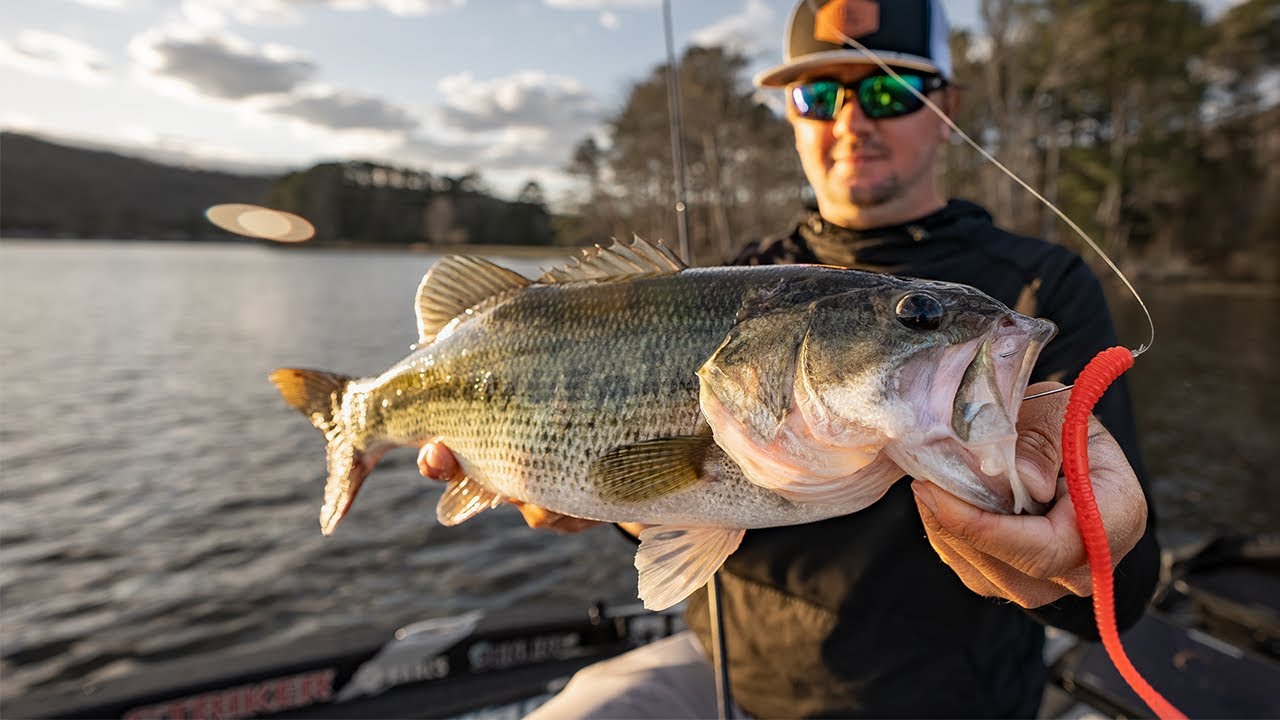The floating worm is an old-school technique that consists of a simple straight-tailed worm rigged Texas-style on a standard offset worm hook. Kyle Welcher explains when and how to fish the setup around bass beds and any holes in the cover, emphasizing the late prespawn through early summer months.
TACKLE USED
- WORM – 13 Fishing BFF Blunt Force Finesse Worm, color – Bright as Sh!*
- HOOK – Gamakatsu Offset Round Bend Worm Hook, 4/0
- ROD – 13 Fishing Envy Black 3, 7’3″ Med-Heavy
- REEL – 13 Fishing Inception Casting Reel, 8.1:1
- LINE – Sunline Shooter Fluorocarbon, 14-pound
- TROLLING MOTOR – MotorGuide Tour Trolling Motor HD+ Sonar
Welcher feels the wacky rig has dominated the floating worm in recent years, but a wacky rig isn’t as effective when bass are in or holding tight to cover. The floating worm delivers a similar tantalizing quiet and subtle action — excellent for wary bass. And given its inline nature, the floating worm can be fished faster than a perpendicular wacky worm, with the ability to achieve a sub-surface walk-the-dog action.
See a hole in the grass or bass on a bed? Stop the retrieve and let the worm slowly sink seductively in place. Bright non-natural covers are popular, as they help you maintain visual contact with the bait, a plus when sight fishing and drawing fish in from a distance. Thanks to the small profile worm and a sharp worm hook, the floating worm also delivers better than average hooking percentages.












